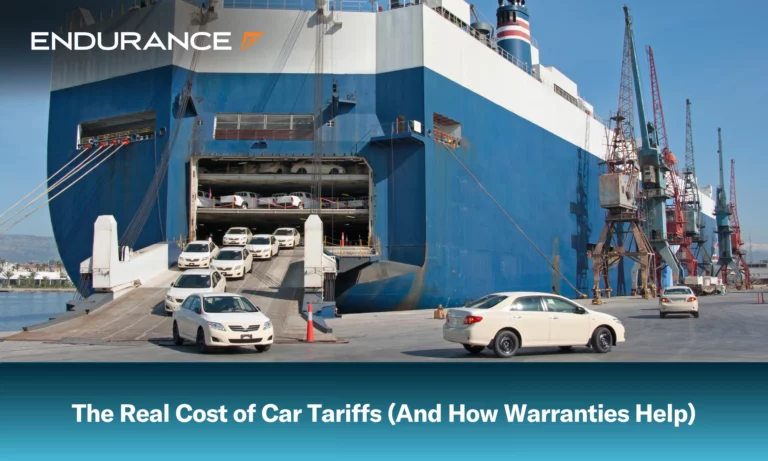Tariff Turbulence: How Automakers Are Navigating New Policy Changes
Automakers are adapting to significant changes in U.S. trade policy following new executive orders that modify automotive tariffs. These changes aim to boost domestic manufacturing while providing some relief to manufacturers and consumers.
Key Changes in Tariff Policy:
- Elimination of stacking tariffs on U.S.-made vehicles
- New reimbursement process for manufacturers using imported parts
- Two-year transition window to increase U.S.-based production
- Rebates of 3.751% of MSRP for U.S. production through April 2026
- Reduced rebate of 2.751% from May 2026 to April 2027

Car transport ship loaded with vehicles
Industry Response and Impact:
- Ford and GM leaders cautiously welcome changes but express concerns
- GM projects potential $1.5 billion profit reduction by 2025
- Manufacturing shifts already occurring:
- GM reducing Silverado production in Canada
- Stellantis temporarily halting some North American production
- Nissan stopping orders for certain Mexico-made Infiniti models
Consumer Effects:
- Expected price increases, particularly for vehicles under $30,000
- 10-15% increase projected for popular affordable models
- Varying strategies by manufacturers to handle costs
- Higher repair costs due to parts tariffs
Manufacturing Challenges:
- 3-10 years typically needed for new U.S. plant construction
- Complex supply chain adjustments required
- Current U.S. auto market statistics:
- 50% of 16 million vehicles sold are imported
- Only 25% of content in U.S.-purchased vehicles is American-made
- $93.5 billion auto parts trade deficit in 2024
The industry faces ongoing uncertainty as manufacturers adapt to these policy changes while balancing production costs, supply chain logistics, and consumer demand. Success will depend on regulatory stability and manufacturers' ability to adjust their operations effectively.

Man in baseball cap

Cars loaded on cargo vessel

Woman smiling while driving in California

Manual transmission stick shift in car
